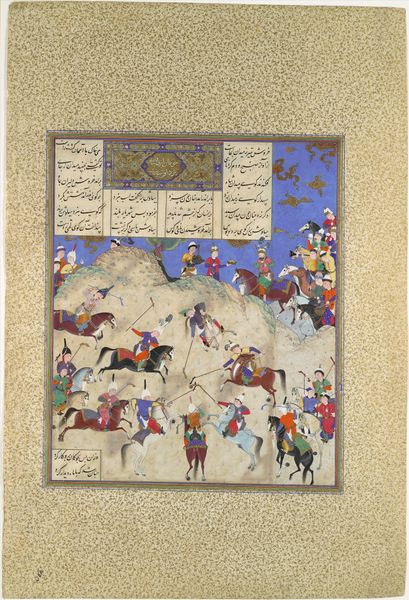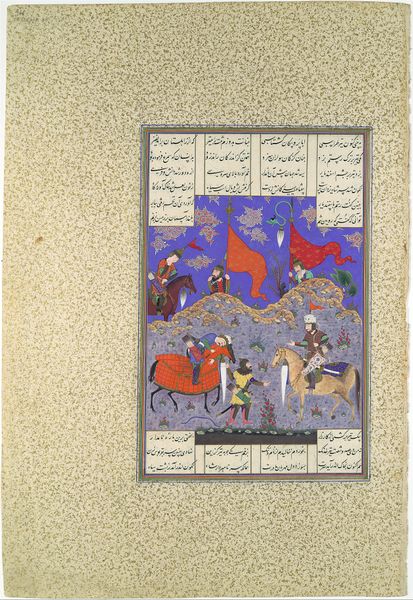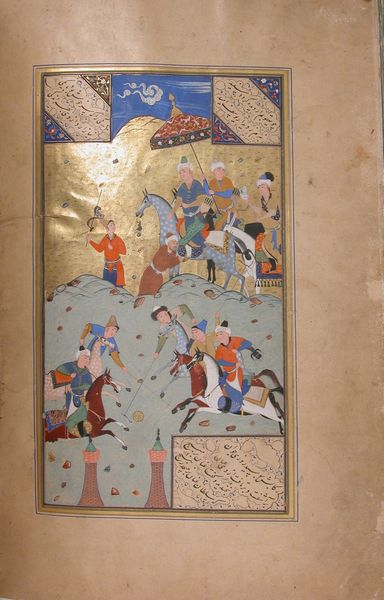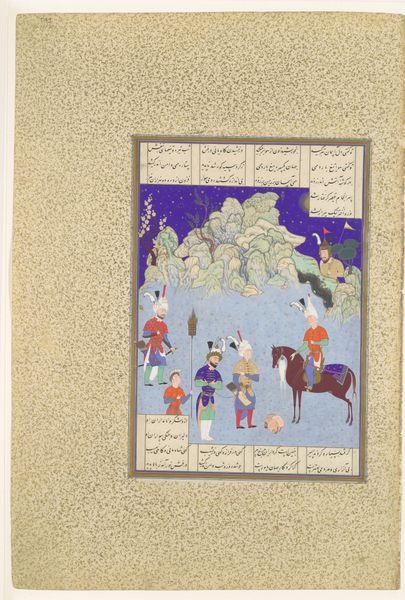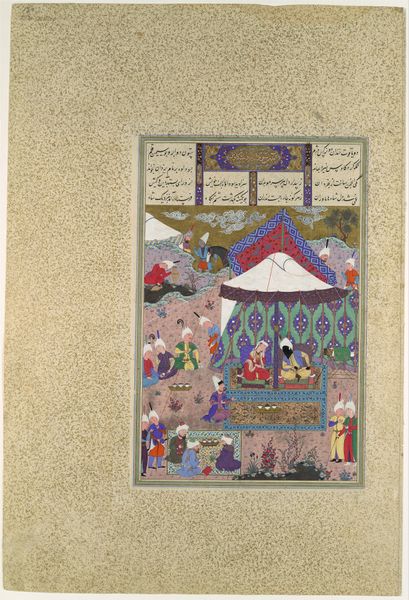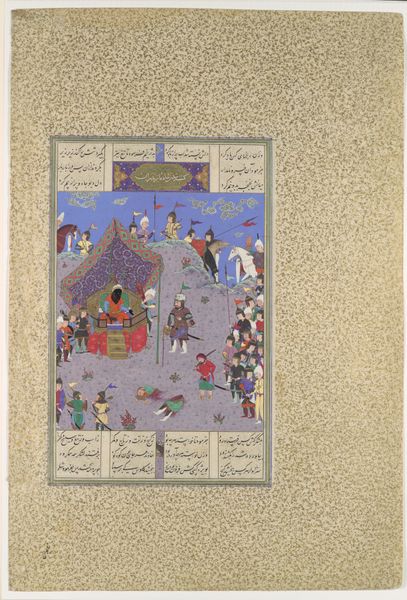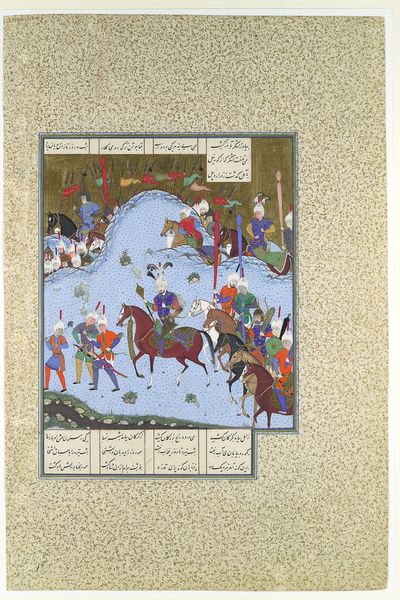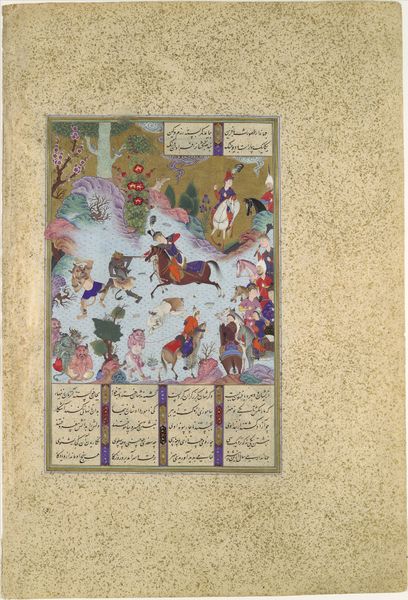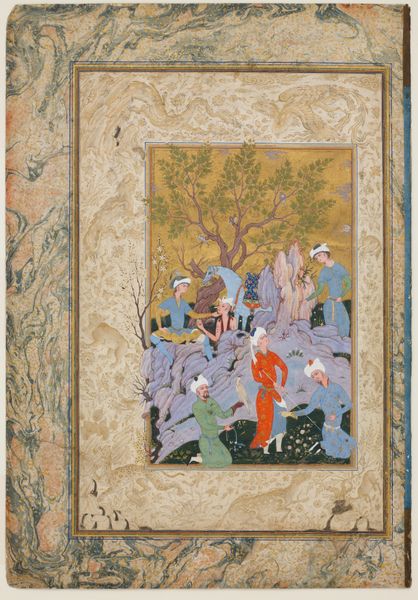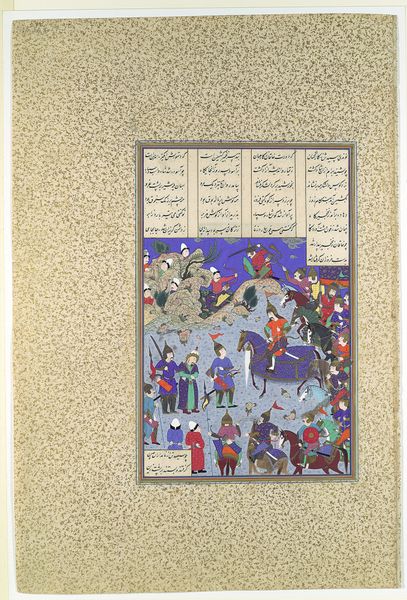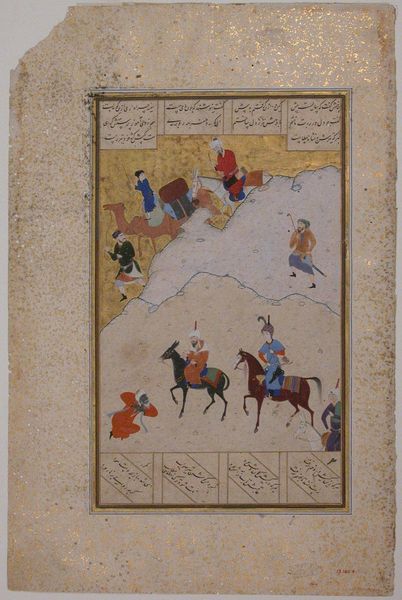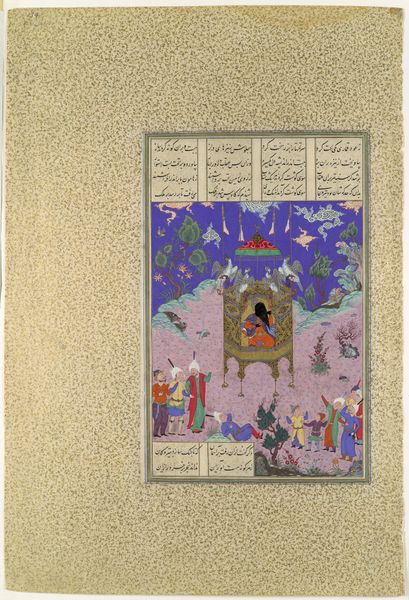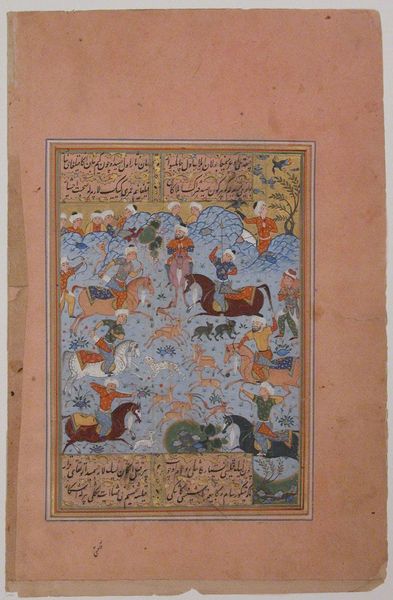
"Sultan Sanjar and the Old Woman", Folio 17 from a Khamsa (Quintet) of Nizami of Ganja 1500 - 1550
0:00
0:00
painting, watercolor
#
narrative-art
#
painting
#
asian-art
#
landscape
#
figuration
#
watercolor
#
horse
#
men
#
islamic-art
#
miniature
Dimensions: Painting: H. 7 1/4 in. (18.4 cm) W. 4 7/8 in. (12.4 cm) Page: H. 12 9/16 in. (31.9 cm) W. 8 5/8 in. (21.9 cm) Mat: H. 19 1/4 in. (48.9 cm) W. 14 1/4 in. (36.2 cm)
Copyright: Public Domain
Editor: Here we have "Sultan Sanjar and the Old Woman," a watercolor from a Khamsa by Nizami of Ganja, created sometime between 1500 and 1550. I find the whole scene feels strangely serene, even with all those figures. What jumps out at you when you look at it? Curator: Serene, you say? Perhaps because it captures a fleeting moment of…recognition, wouldn't you agree? Nizami was a master storyteller, weaving complex moral tales. What’s fascinating here is the delicate balance he strikes. The scene is meticulously arranged, each figure and horse a carefully placed element in a larger composition, yet there's an underlying current of humanity. What do you think the old woman represents? Is it just age and poverty? Or something more…elemental? Editor: Elemental, maybe a kind of raw honesty? It seems like she’s offering some hard truth to power. I notice the landscape is dotted with these tiny, almost dreamlike hills. It creates a really interesting contrast with the very serious interaction between the Sultan and her. Curator: Absolutely! Consider the scale—this is a miniature, demanding intimate viewing. Nizami shrinks the world, inviting us into a personal encounter between power and vulnerability. It begs the question, doesn't it? Are we seeing an act of charity, a challenge to authority, or a fable about listening to those we often overlook? And have you noticed the golden script above and below the image? What purpose do you think it serves? Editor: Hmm, I had just assumed it was part of the decorative frame. But now that you mention it, perhaps it frames the story, literally, giving context to this little scene. Like a subtitle on a film? Curator: Precisely! A clue to the underlying moral perhaps? Nizami isn't simply painting a picture; he's crafting a message, and, really, isn't that what all great art aims to do? Editor: That’s a fresh perspective; I had overlooked the narrative purpose. It's made me think about how the context really informs how we understand a painting, particularly miniatures.
Comments
No comments
Be the first to comment and join the conversation on the ultimate creative platform.

